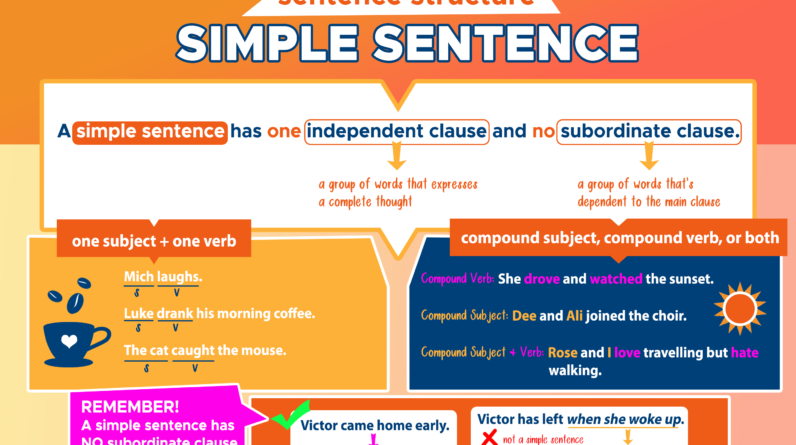
In this article, you will learn how to craft a compelling sentence that grabs your reader’s attention. Whether you’re writing an essay, a blog post, or even just a social media caption, a well-crafted sentence can make all the difference in captivating your audience. So, let’s dive right in and explore some tips and techniques that will help you create sentences that stand out.
The first step in crafting a compelling sentence is to have a clear and concise message. Before putting pen to paper, or fingers to keyboard, take a moment to think about what you want to convey. What is the main idea or emotion that you want to express? Once you have a grasp on this, you can begin constructing your sentence in a way that effectively communicates your message. Remember to use strong and vivid language, as well as specific details, to make your sentence more engaging and memorable.
Table of Contents
How to Craft a Compelling Sentence
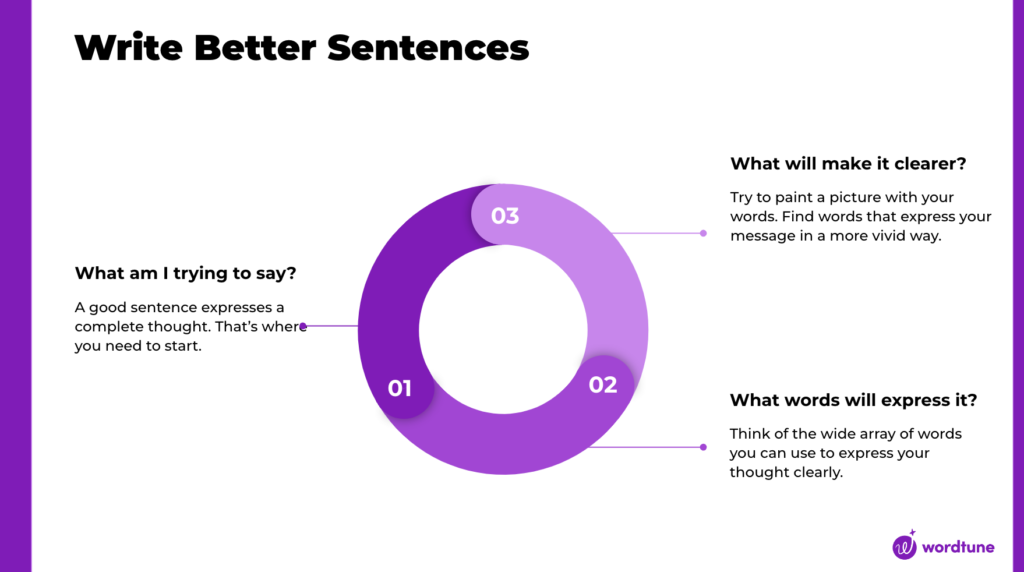
Introduction
In the world of writing, the power of a single sentence should never be underestimated. A compelling sentence has the ability to captivate readers, evoke emotions, and leave a lasting impact. Whether you are writing a novel, an article, or even a simple email, mastering the art of crafting compelling sentences is essential. In this article, we will explore the impact and importance of compelling sentences, understand the elements and structure behind them, learn techniques for crafting them, explore examples, and provide exercises for practice. So let’s dive in and discover the secrets to creating sentences that truly capture the attention of your audience.
Impact of a Strong Sentence
A strong sentence has the potential to make a significant impact on its readers. It can hook them right from the start, drawing them into the narrative, and keeping their attention throughout the entire piece of writing. A compelling sentence has the power to create suspense, generate curiosity, and spark a desire to continue reading. It sets the tone and the mood, conveying the writer’s message effectively and leaving a lasting impression. Whether you are writing a persuasive essay, a thrilling suspense novel, or a persuasive sales pitch, the impact of a strong sentence cannot be overstated.
Importance of Crafting Compelling Sentences
Crafting compelling sentences is crucial because it determines the quality of your writing. Whether you are a professional writer or a casual blogger, the ability to express your thoughts and ideas in a way that captures your readers’ attention is vital. A well-crafted sentence can elevate your writing, making it more engaging, persuasive, and memorable. Writing with clarity and precision not only enhances the reader’s understanding but also helps you convey your message effectively. By mastering the art of crafting compelling sentences, you can become a more effective communicator and a more influential writer.
Purpose of a Compelling Sentence
The purpose of a compelling sentence is to engage your audience and draw them into your writing. A compelling sentence acts as a gateway, inviting readers to explore further and compelling them to continue reading. It creates a connection between the reader and the writer, establishing trust and fostering engagement. Whether you aim to entertain, inform, or persuade, a compelling sentence sets the stage for achieving your desired purpose. It helps you to communicate your ideas with impact and empowers you to leave a lasting impression on your readers.
Understanding Sentence Structure
To craft compelling sentences, it is important to understand the structure and components of a sentence. A sentence is made up of two main parts: the subject and the predicate. The subject is the person or thing that the sentence is about, while the predicate contains the verb and provides information about the subject. By understanding these components and the types of sentences, you can create sentences that are clear, concise, and effective.
Components of a Sentence
A sentence consists of a subject and a predicate. The subject is typically a noun or a pronoun, and it performs the action or is described by the predicate. The predicate, on the other hand, contains the verb and provides information about the subject. By ensuring clarity in your subject and predicate, you lay a strong foundation for crafting compelling sentences.
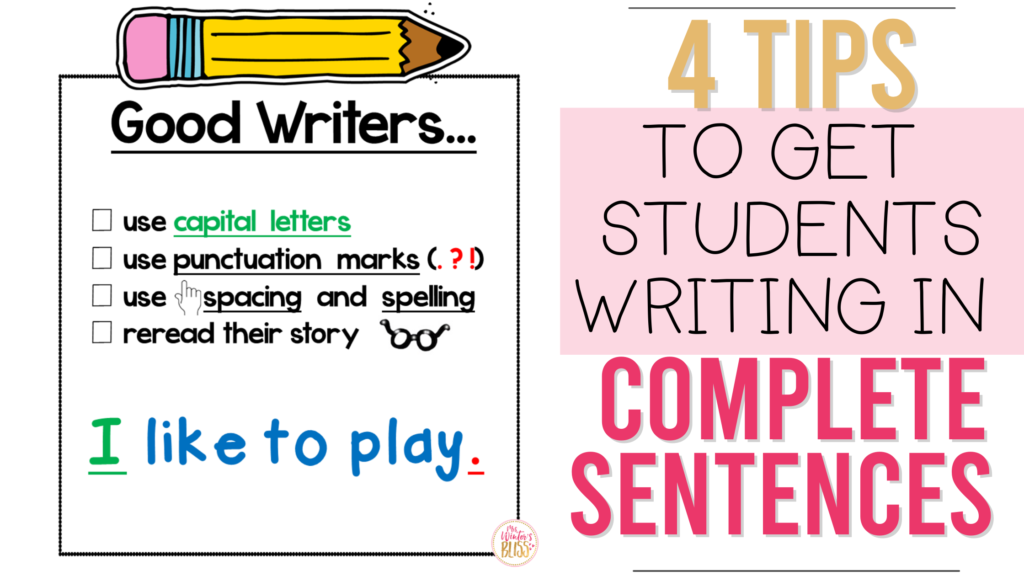
Subject and Predicate
The subject of a sentence is the focus or the topic of the sentence. It answers the question “who” or “what” the sentence is about. For example, in the sentence, “John went to the supermarket,” “John” is the subject. The predicate, on the other hand, contains the verb and provides information about the subject. In the same example, “went to the supermarket” is the predicate, describing the action that the subject, John, performed.
Types of Sentences
Understanding the different types of sentences can help you add variety and impact to your writing. There are four main types of sentences: declarative, interrogative, imperative, and exclamatory. A declarative sentence makes a statement or expresses an opinion. An interrogative sentence asks a question. An imperative sentence gives a command or makes a request. An exclamatory sentence conveys strong emotion or excitement. By using a mix of these sentence types, you can create a rhythm and flow in your writing that keeps your readers engaged.
Elements of a Compelling Sentence
Now that we have a solid understanding of sentence structure, let’s explore the key elements that make a sentence compelling. Incorporating these elements into your writing can help you create sentences that are clear, vivid, and emotionally impactful.
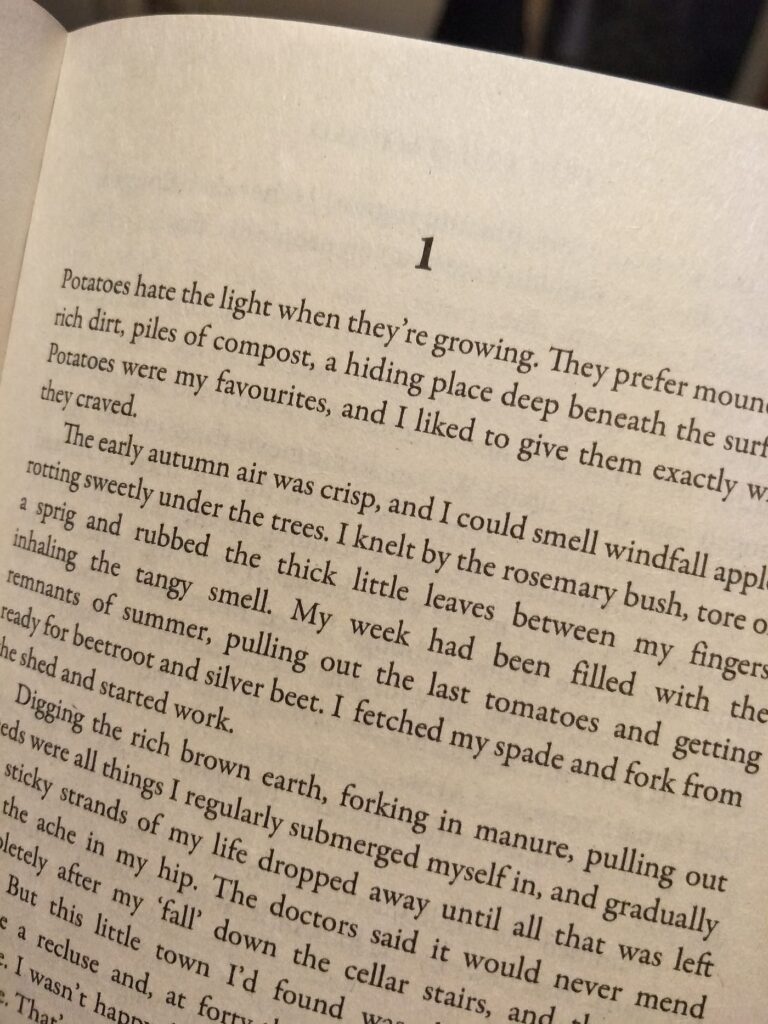
Clarity and Conciseness
A compelling sentence is clear and concise, leaving no room for ambiguity or confusion. It conveys its message effectively, using simple and precise language. Avoiding unnecessary words and focusing on the essence of your message makes your sentences more powerful and impactful. By eliminating clutter and establishing clarity, you ensure that your readers can easily comprehend and connect with your ideas.
Vivid and Descriptive Language
A compelling sentence uses vivid and descriptive language to paint a vivid picture in the reader’s mind. By incorporating sensory details, figurative language, and specific nouns and verbs, you can engage your reader’s imagination and create a more immersive reading experience. Instead of relying on generic adjectives and adverbs, choose words that evoke emotions and create a strong visual impact.
Emotional Appeal
Emotions play a crucial role in capturing the reader’s attention and creating a connection with them. A compelling sentence appeals to the reader’s emotions, whether it is through evoking empathy, excitement, or curiosity. By tapping into the reader’s emotions, you can create a sense of resonance and establish an emotional connection with your audience.
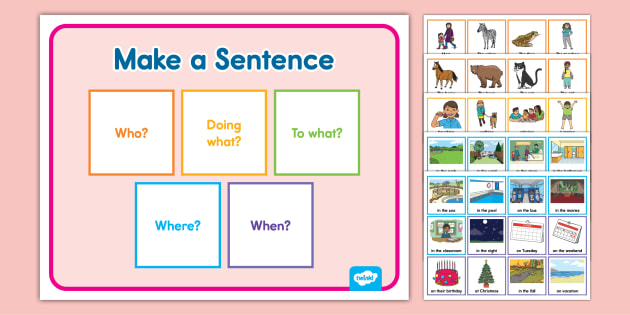
Varied Sentence Length
Using varied sentence lengths adds rhythm and flow to your writing. A monotonous sequence of short or long sentences can be monotonous and tiresome to read. By mixing up the length of your sentences, you create a natural ebb and flow that keeps your readers engaged. Be mindful of sentence length and use it strategically to enhance the impact of your writing.
Rhythm and Flow
Creating a rhythm and flow within your sentences can greatly enhance their impact. By paying attention to sentence structure, using punctuation effectively, and incorporating transitional words and phrases, you can create a smooth and coherent flow. Just like in a musical composition, the rhythm and flow of your sentences can captivate and engage your readers, making your writing more compelling.
Techniques for Crafting Compelling Sentences
Now that we have explored the elements of a compelling sentence, let’s delve into some techniques that can help you craft them effectively. These techniques can be employed to add depth, emotion, and impact to your sentences, making them stand out and resonate with your readers.
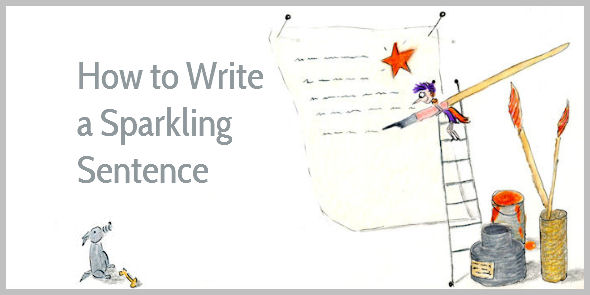
Using Active Voice
One effective technique for crafting compelling sentences is using active voice. Active voice makes your sentences more direct and engaging, as the subject performs the action. It increases the clarity and impact of your writing and helps avoid passive and wordy sentences. For example, instead of saying, “The book was read by me,” you can say, “I read the book.”
Employing Figurative Language
Figurative language, such as metaphors, similes, and personification, can add depth and richness to your sentences. It allows you to express complex ideas in a more imaginative and vivid way. By comparing or associating one thing with another, you can create powerful visual imagery and evoke emotions in your readers. Just be careful not to overuse or force figurative language, as it may detract from your message.
Utilizing Strong Verbs
Choosing strong verbs instead of weak ones can greatly enhance the impact of your sentences. Strong verbs convey action and energy, bringing your sentences to life. Rather than relying on adjectives and adverbs to describe actions, let the verbs work their magic. For example, instead of saying, “He ran quickly,” you can say, “He sprinted.”
Applying the Rule of Three
The rule of three is a powerful rhetorical technique that involves presenting three elements or ideas in quick succession. It creates a sense of balance, harmony, and completeness in your sentences. The human brain is naturally drawn to patterns and repetition, making the rule of three an effective technique to grab your reader’s attention and emphasize your point. For example, you can say, “She was courageous, determined, and resilient.”
Creating Suspense and Tension
Crafting compelling sentences involves keeping your readers engaged and wanting more. One effective way to achieve this is by creating suspense and tension. By withholding information or posing rhetorical questions, you can pique your reader’s curiosity and drive them to continue reading. The element of surprise and anticipation adds excitement and intrigue to your writing.
Enhancing Sentence Impact through Editing
Crafting compelling sentences doesn’t stop at the writing stage. Editing and revising your sentences can greatly enhance their impact and effectiveness. By following some key editing principles, you can ensure that your sentences are concise, clear, and free of errors.
Eliminating Redundancies
Redundancies can weaken your sentences and dilute their impact. When editing, look out for unnecessary words, phrases, or repetition that add no value to your sentence. Trim down your sentences to their essence and remove any superfluous content. This allows your message to shine through with clarity and power.
Avoiding Jargon and Clichés
Using jargon or clichés can make your sentences sound stale and unoriginal. Instead, choose clear and precise language that resonates with your readers. Be mindful of your audience and use terms they can easily understand. Eliminating jargon and clichés helps you maintain clarity and engage your reader on a deeper level.
Maintaining Consistent Verb Tense
Inconsistent verb tense can confuse your readers and disrupt the flow of your writing. When editing, make sure to check that your verb tense remains consistent throughout your sentences. Consistency in verb tense improves readability and helps convey your message with clarity and precision.
Checking for Grammar and Punctuation Errors
Grammar and punctuation errors can detract from the impact of your sentences. When editing, double-check for grammar and punctuation mistakes to ensure that your sentences are grammatically correct. Incorrect punctuation can lead to misunderstandings and confusion, while flawed grammar undermines your credibility as a writer. Take the time to review your sentences carefully and make the necessary corrections.
Examples of Compelling Sentences
To further illustrate the concept of compelling sentences, let’s explore some examples from famous literature:
- “It was a bright cold day in April, and the clocks were striking thirteen.” – George Orwell, 1984
- “It was the best of times, it was the worst of times, it was the age of wisdom, it was the age of foolishness.” – Charles Dickens, A Tale of Two Cities
These sentences grab the reader’s attention right from the start, setting the tone and mood for the entire piece of writing.
Exercises for Practicing Compelling Sentences
To improve your ability to craft compelling sentences, here are a few exercises you can try:
Sentence Rewriting Prompts
Take a simple sentence and rewrite it to make it more compelling. For example:
Original: “She walked to the park.” Rewritten: “With determination in her stride, she made her way to the park.”
Sentence Analysis and Critique
Select a few sentences from a book or article you admire and analyze what makes them compelling. Identify the elements of vivid language, emotional appeal, or sentence structure that make them stand out. Use these insights to improve your own writing.
Tips for Overcoming Writer’s Block
Crafting compelling sentences can be challenging, especially when faced with writer’s block. Here are a few tips to help you overcome this hurdle:
Freewriting to Generate Ideas
Set a timer for a specific duration, such as 10 minutes, and write continuously without worrying about grammar or coherence. Freewriting helps to silence your inner critic and allows your thoughts and ideas to flow more freely. It can help you unlock your creativity and generate ideas for compelling sentences.
Breaking Down the Writing Process
When crafting sentences, it can be helpful to break down the task into smaller, more manageable steps. Start by brainstorming ideas, outlining your main points, and then focus on crafting individual sentences. By tackling small sections at a time, you can prevent overwhelm and make the process more manageable.
Seeking Inspiration from Different Sources
If you’re feeling stuck, seek inspiration from different sources. Read books, articles, or essays from writers whose style you admire. Listen to podcasts or watch movies to expose yourself to different perspectives and narratives. Taking a break and immersing yourself in different forms of storytelling can revitalize your creativity and help you craft more compelling sentences.
Common Mistakes to Avoid in Sentence Crafting
In the pursuit of crafting compelling sentences, it’s important to be aware of common mistakes that can detract from the impact of your writing. Avoiding these mistakes will help you maintain clarity, engage your readers, and ensure the effectiveness of your sentences.
Run-on and Fragmented Sentences
Run-on sentences, where multiple independent clauses are improperly joined together, can confuse and overwhelm your reader. On the other hand, fragmented sentences lack a subject, predicate, or both, and can make your writing feel disjointed. Be mindful of proper sentence structure and avoid run-on or fragmented sentences.
Overusing Adjectives and Adverbs
While descriptive language is important in crafting compelling sentences, overusing adjectives and adverbs can result in wordy and diluted sentences. Use these modifiers sparingly and focus on choosing strong nouns and verbs that can convey your message more effectively.
Lack of Sentence Variety
Using the same sentence structure repeatedly can make your writing monotonous and dull. Vary your sentence length, structure, and type to create a rhythm and flow that keeps your readers engaged. Experiment with different sentence types, such as compound, complex, or compound-complex, to add depth and variety to your writing.
Weak Transitions
Transitions play a crucial role in connecting sentences and ideas smoothly. Weak transitions or lack thereof can make your writing feel disjointed and confusing. Use transitional words and phrases, such as “however,” “nevertheless,” or “as a result,” to guide your reader through your sentences and ensure a coherent flow of ideas.
Conclusion
Crafting compelling sentences is an essential skill for any writer. By understanding the impact and importance of compelling sentences, mastering sentence structure, incorporating key elements, and employing effective techniques, you can create sentences that captivate your readers and leave a lasting impression. With practice, perseverance, and attention to detail, you can become a skilled craftsman of compelling sentences. So go ahead, start honing your skills, and let your words command the attention they deserve.




